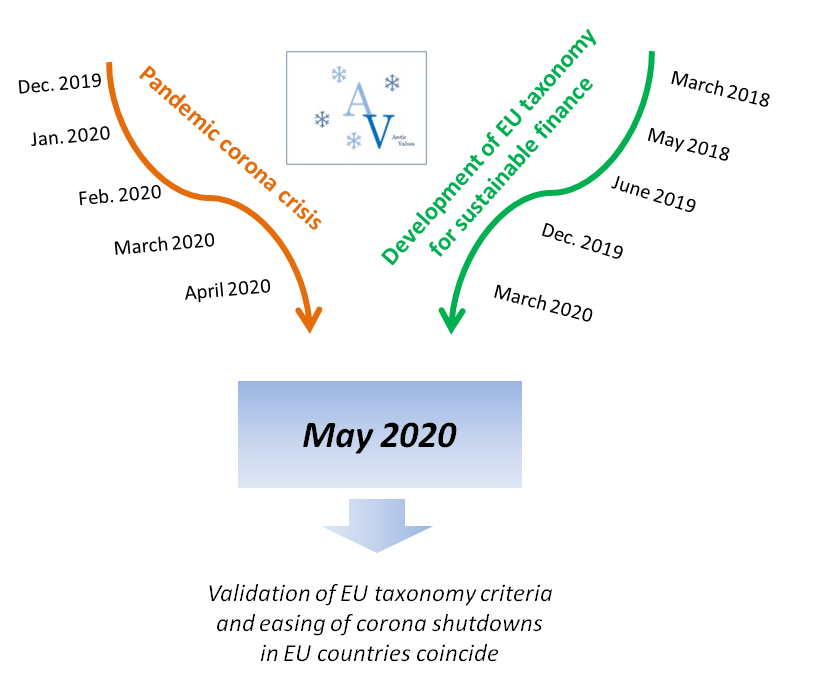by Adrian Braun
May 2020
The EU taxonomy was initiated and to the largest extent negotiated long before the corona crisis struck the global economy. Coincidentally the finalization of the taxonomy (the confirmation of the European Parliament) and the easing of the corona shutdown in multiple EU countries come at the same time. Overall the EU taxonomy for sustainable finance is a framework that defines guidance how private capital could be directed into sustainable businesses and projects that embrace actual implementation of ecological and social aspects and requires eventually verifiable performances in these parameters. For too long ecological and social considerations in enterprises had been often only claimed, while the actual impact was in many cases just marginal or not sustainable at all. The taxonomy defines what green technologies are and sustainable energies and institutional investors can utilize this framework to receive an established “confirmation” that their investment is in fact “green” and not only “green-labeled” meaning by definition “green-washed”.

In these particular days, as of early May 2020, though the corona crisis is by no means over, many countries across Europe end diverse restrictions that simultaneously banned many business activities and led to economic shutdowns. These shutdowns came all of a sudden and there was little to no-time to execute necessary preparations to soften negative impacts, such as (at least temporary) unemployment and omissions of revenues. Evidently, it will not be possible in many sectors to re-start operations from one day to another and arguably national and regional authorities could play an essential role to support the re-start. Unsustainable practices for example in global supply chains and the neglect of back-up solutions and partnerships throughout the global economies in case of a severe crisis like we have entered in early 2020 has led to the high implications in global economies and the necessity that rescue funds and subsidies need to be utilized in enormous amounts.
Easing restrictions and getting businesses back on track is a challenge, but at the same time an opportunity to use the new EU taxonomy for sustainable finance to improve practices in the future and to become resilient for the next financial crisis, whatever the cause might be then. Institutional investors that perceive good opportunities for capital provisions during this re-start could get more familiar with what is a sustainable investment and what is not. They can further integrate the ESG-concept (Environmental, Social, Governance) and become more resilient themselves against investment losses due to unsustainable practices, resulting conflicts and in worst cases insolvencies. By considering the six overall taxonomy objectives that address environmental performances of business activities, each activity does not only require good performance at least towards one objective, it is at the same time demanded not to violate any other objective. This may be also one starting point for future business and investment practices by not outweighing positive impacts against negative impacts, but avoiding all negative impacts to the greatest possible extent to be less vulnerable and more sustainable in all times, in crises or not.
Legal Notice / Impressum – Arctic Values – Copyright © 2022